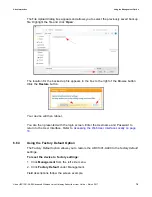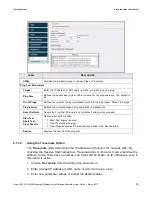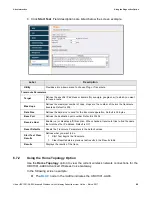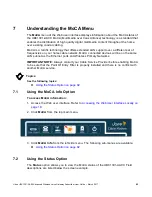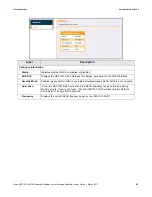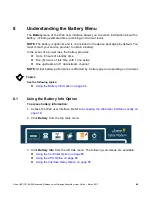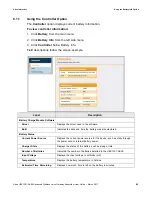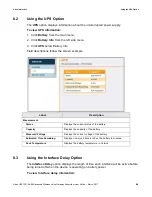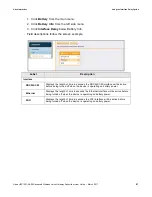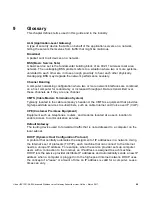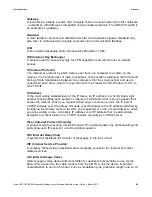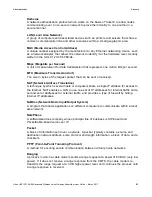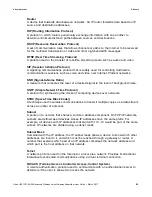
Ubee Interactive
Glossary
Ubee UBC1301-AA00 Advanced Wireless Voice Gateway Subscriber User Guide • March 2017
90
Gateway
A local device, usually a router, that connects hosts on a local network to other networks
– sometimes with different incompatible communication protocols. The UBC1301-AA00 is
an example of a gateway.
Headend
A main facility to process and distribute Internet communication signals. Headend may
also refer to cable television signals and power line communication facilities.
ICQ
A free instant-messaging utility introduced by Mirabilis in 1996.
IKE (Internet Key Exchange)
A protocol used to ensure security for VPN negotiation and remote host or network
access.
IP (Internet Protocol)
The method or protocol by which data is sent from one computer to another on the
Internet. It is a standard set of rules, procedures, or conventions relating to the format and
timing of data transmission between two computers that they must accept and use to
understand each other. Used in conjunction with the Transfer Control Protocol (TCP) to
form TCP/IP.
IP Address
In the most widely installed level of the IP today, an IP address is a 32-bit binary digit
number that identifies each sender or receiver of information that is sent in packet form
across the Internet. When you request a Web page or send an e-mail, the IP part of
TCP/IP includes your IP address. IP sends your IP address to the IP address obtained by
looking up the domain name in the URL you requested or in the e-mail address to which
you are sending a note. A dynamic IP address is an IP address that is automatically
assigned to a client station in a TCP/IP network, typically by a DHCP server.
IPsec (Internet Protocol Security)
A protocol suite for securing Internet Protocol (IP) communications by authenticating and
encrypting each IP packet of a communication session.
IRC (Internet Relay Chat)
A system that facilitates the transfer of messages in the form of text.
ISP (Internet Service Provider)
A company that provides individuals and companies access to the Internet and other
related services.
IUC (Interval Usage Code)
Interval usage codes define different profiles for upstream burst profiles to use for the
data. IUCs are sent to the cable modem from the CMTS to tell the device important
characteristics to use for the burst, such as modulation type, preamble length, and so on.

